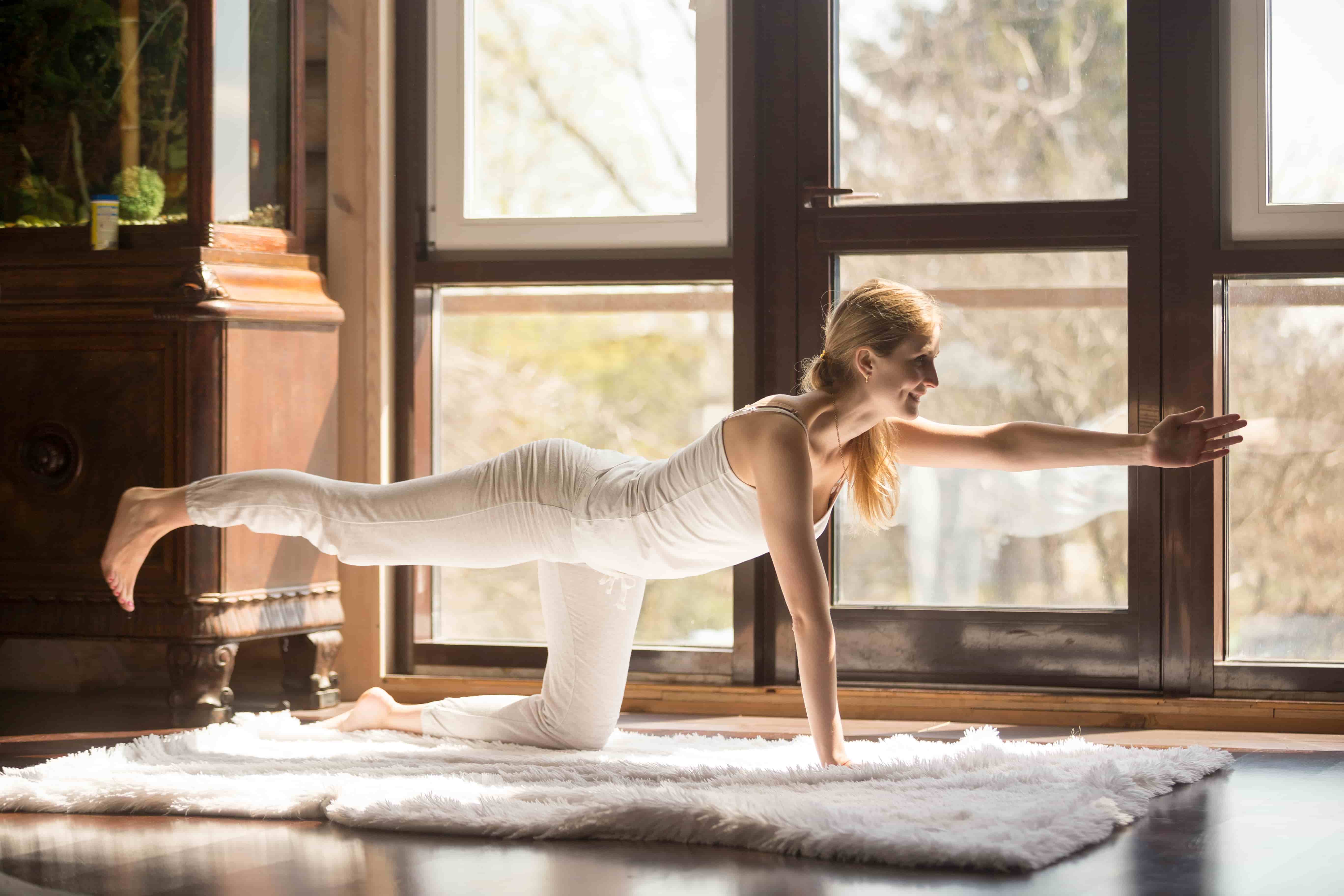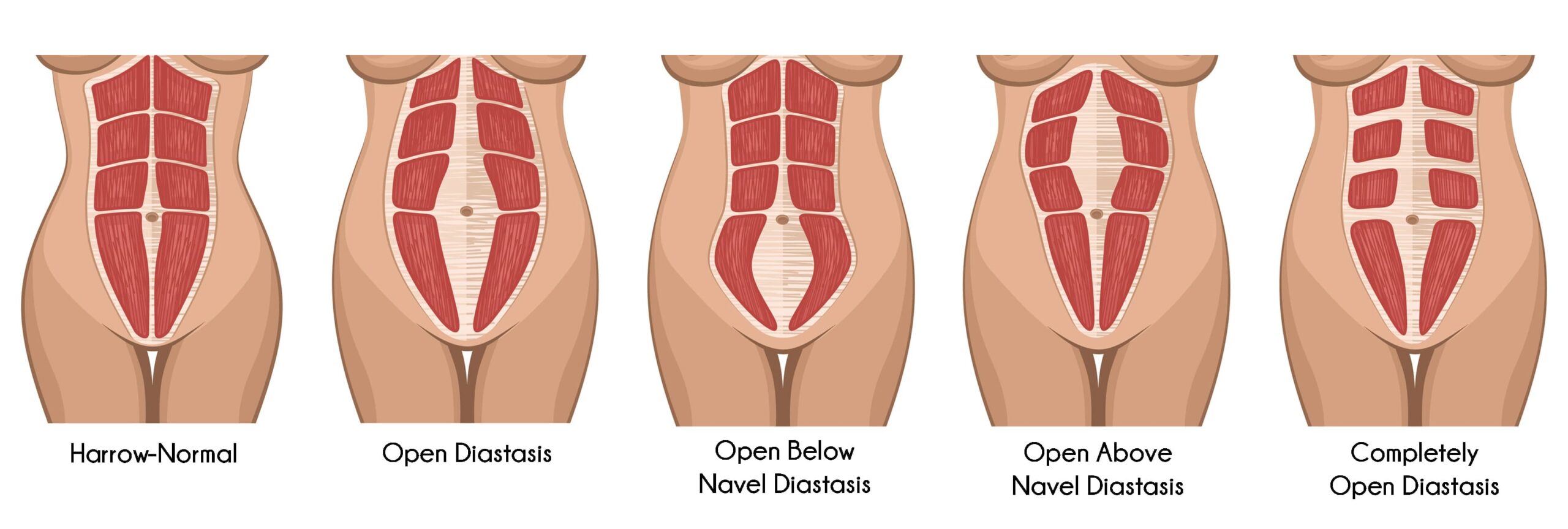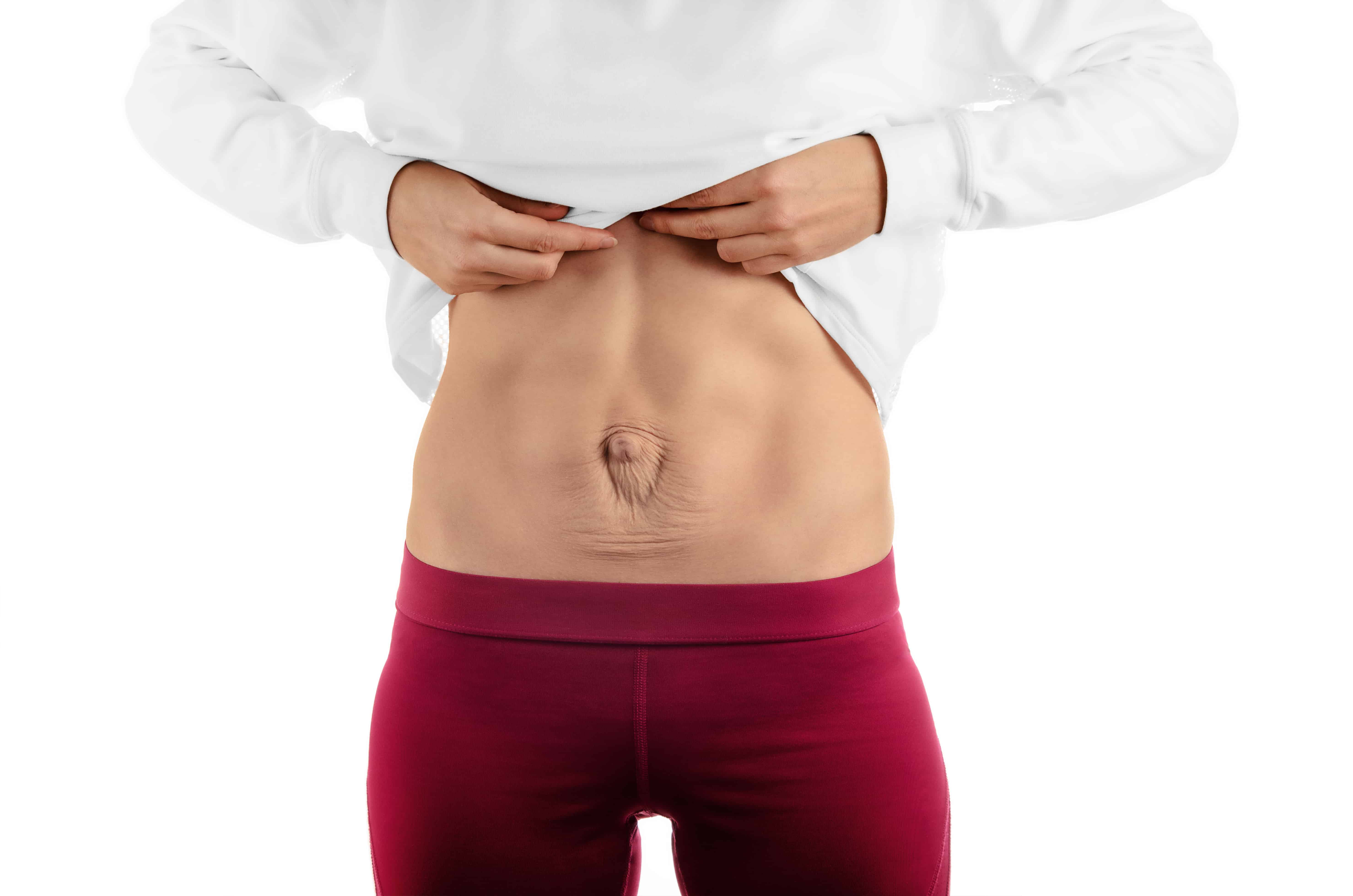Hey there mama! Have you recently given birth? Or maybe you’re 6 months postpartum but your tummy is still bulging out?
You may think it’s a weight issue but actually, it could have very little to do with your weight! It could be a muscle separation issue called- Diastasis Recti.
After the birth of our son in January I’ve noticed I have some separation, so I’m beginning to work on this and beginning to learn what’s working for me.
What Is Diastasis Recti?
Simply put, Diastasis Recti is a gap in the abdominal wall muscles. This is when your six-pack muscles are stretched sideways during pregnancy as the uterus expands.
After pregnancy, the tummy shrinks but doesn’t fully return to normal because the connective tissues are stretched leaving mama with that half pregnant look! Exercises and physical therapy are then used to assist those tissues to return to their normal elasticity.
Before researching for this article I had no idea what Diastasis Recti was- much less what exercises I could do to help improve it.
I was shocked to learn that between 66% to 100% of women experience Diastasis Recti during their third trimester of pregnancy.
For something that affects so many women, this is something that is barely talked about!
What Causes Diastasis Recti?
Diastasis Recti is caused by a couple of different things. The main thing that causes it is the uterus expanding during pregnancy which pushes up against the abdominal wall.
This stretches the connective tissues between the abdominal wall muscles and creates a gap.
After pregnancy the uterus shrinks, less pressure is applied to the abdominal wall and that gap slowly shrinks. Only there’s a problem- the gap doesn’t close all the way!
Like an overstretched rubber band, the connective tissues within the abdominal wall aren’t able to fully tighten u to how they were before pregnancy.
The second factor that causes Diastasis Recti- you guessed it- Hormones!!
The hormone Relaxin is produced within the body as it prepares for the delivery of baby. This affects the joints and tissues which causes them to soften.
What’s interesting is that even AFTER DELIVERY the body will continue to produce the hormone Relaxin in those mama’s who choose to breastfeed.
Relaxin can affect the body for 5-6 months after nursing has stopped!!
Don’t freak out though because only about 39% of mamas still have Diastasis Recti at the postpartum 6-12 week mark.
For that 39% that’s where physical therapy and exercises come into play!
6 Diastasis Recti Exercises
An important thing to keep in mind is that everyone’s physical fitness level is different. Be sure to consult with your doctor and use common sense before jumping in and doing a bunch of different exercises.
Don’t start off with such intensity that you cause more damage to yourself. Slow and steady is key here!
For best results, you want to focus on tightening up your abdominal muscles. Don’t just suck your tummy in! Imagine bringing your belly button to your spine- kinda like a vacuum!
If you do a quick search you’ll find 100’s of Diastasis Recti workout positions. It can be a little overwhelming! So I’ve compiled 6 that I myself am using to help close my abdominal gap.
No matter what exercises you choose- it’s important to do ones that pull your abs inwards and focus on the deep inner ab muscles.
1. Bridge/pelvic tilt

- For the starting position, lay down on your back with your knees bent and feet flat on the floor. Keep your arms down at your sides.
- Using your hips and feet push off the floor so your butt is off the ground.
- Hold this position for 3 seconds then return to the starting position.
- For a BONUS add a Keagle when you are holding the bridge position. Work that pelvic floor mama!
2. Pelvic Pillow Squeeze
- Starting position is the same as the bridge.
- Grab a pillow and put it in between your knees.
- Squeeze the pillow for 3 seconds, rest for 3 seconds, and repeat.
3. Toe Tap
- Start by laying on your back, your legs bent at a 90-degree angle in the air, and your arms down at your sides.
- With your toes pointed, slowly lower one leg to the ground and touch the floor with your toes.
- Bring your foot back to the start position and repeat with the other leg.
- Going slow is KEY! Also, make sure you keep your back perfectly flat on the floor… no mouse holes!
4. Heel slides
- Starting position once again is on your back with your knees bent and both feet flat on the floor.
- Slide one leg down so it’s parallel to the floor then bring it back to a bent position.
- Repeat with the other leg.
- To make this move more advanced you can add a leg lift upon return instead of sliding your heel back.
5. Bird Dog/Opposite Arm Leg Raises

- Start on your hands and knees, with both hands flat on the ground.
- Raise your right arm and your left leg out so they are parallel to the floor.
- Hold for 3 seconds then return to the starting position.
- Repeat with your left arm and right leg.
Personally, I do each of these exercises for 60 seconds (resting for 10 seconds between each) and do the circuit 2-3 times.
Do what you are comfortable with, if something hurts or doesn’t feel right stop. Listen to your body!
Remember to keep your core engaged and tight with ALL of these exercises!
Remember to consult with your doctor or physical therapist if you’re unsure if your body can handle these exercises. Everyone’s fitness level is different. What works for one person may not work as well for someone else!
Diastasis Recti Exercises To Avoid
One thing that I want to stress is that every mama is on a different level with their fitness abilities. Some exercises may be right for some, and not for others.
Correcting Diastasis Recti is about performing functional exercises to build that muscle back up. Not going all out on the latest abb busting workout!
Start slow and work your way up.
Generally speaking, exercises like these shouldn’t be done by mama’s with Diastasis Recti
- Sit-ups
- Crunches
- Regular planks
- Any twisting at the waist
- Lifting heavy objects
If you’re apprehensive about easing back into exercising or unsure what exercises to do, talk to your doctor or hire a physical therapist to help give you that confidence boost.
How To Check For Diastasis Recti
Checking for Diastasis Recti is pretty easy! Before I wrote this post, I tried myself and it only took me a few minutes. Turns out I had two fingers width of separation!
To check do the following
- Lie on your back in a crunch position. Legs bent, feet flat on the floor.
- Place fingers on your midline near your belly button and press down gently
- Keeping shoulders on the ground, bring your head up like you’re about to do a crunch
- Feel the sides of your abdomen muscles and how many finger widths apart they are
- How many finger lengths will determine how severe the separation of your abdominal wall muscles are

How To Prevent/ Reduce Diastasis Recti During Pregnancy
As natural-minded mama’s we’re all about prevention. It’s way easier to take steps ahead of time to prevent an ailment or bodily injury from happening down the road than it is to deal with the problem once it’s here.
Prevention is a big reason why so many are choosing the natural route!
So I want to be completely honest with you in saying that you can’t totally prevent Diastasis Recti from happening. Gasp!
Well, you could- just don’t get pregnant! But that’s not helpful 😉
Core separation is going to happen to every mama out there- sorry! Your body has to expand to make room for your baby.
But it’s not all doom and gloom- there are some things you can to do reduce the severity of Diastasis Recti!
Exercise!
Staying active is important before and during pregnancy. Studies like this one show that women who exercise regularly have much smaller gaps in their abdominal walls.
This means they’re able to recover and bounce back much quicker from Diastasis Recti than those mothers who don’t exercise.
Doing exercises like Kegels- that strengthen the pelvic floor, or core exercises are a great way to help reduce the severity of Diastasis Recti
Maintain Good Posture
Don’t let anyone tell you otherwise- posture is important! Especially during pregnancy.
- Stand tall
- Don’t look down when walking around, keep your head straight- looking forward
- Don’t lock your knees
- Use your core to hold your body up
These are just some of the important posture techniques to keep in mind.
Be mindful of your movements
Be careful how you move around- especially when you’re getting pretty large and near term! It can be easy to tweak something when you’re carrying a bunch of extra weight around the tummy.
Some things to be mindful of are….
- Bend with your legs instead of your back when picking things up
- Don’t just use your abdominal muscles when lifting yourself up
- Roll out of bed instead of sitting up
- Avoid exercises that put extra strain on your abs
All of these can go a long way to help reduce the likelihood of making Diastasis Recti worse!
What’s Your Take?
We want to hear from you! Do you have Diastasis Recti? If so, how bad is it? What exercises have you done to try and tighten those ab muscles back up?!







0 Comments